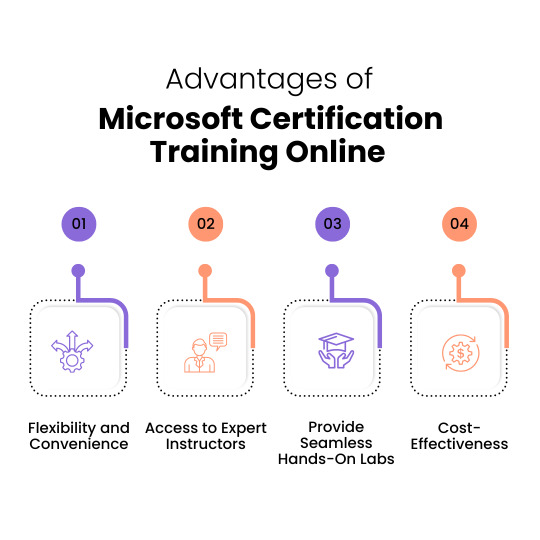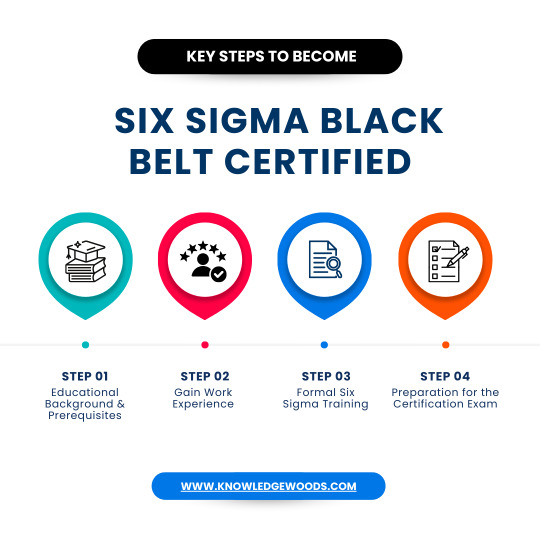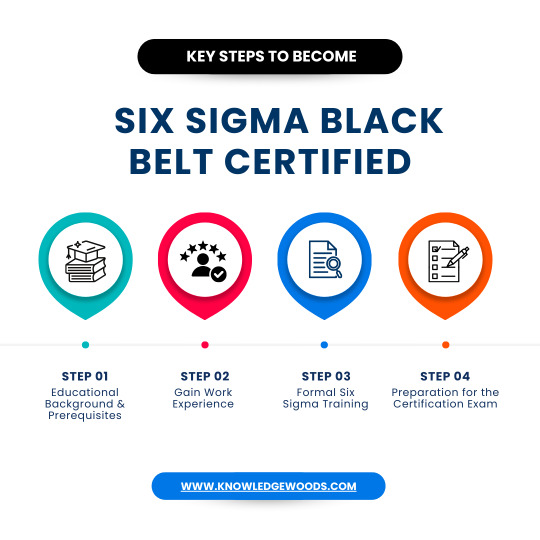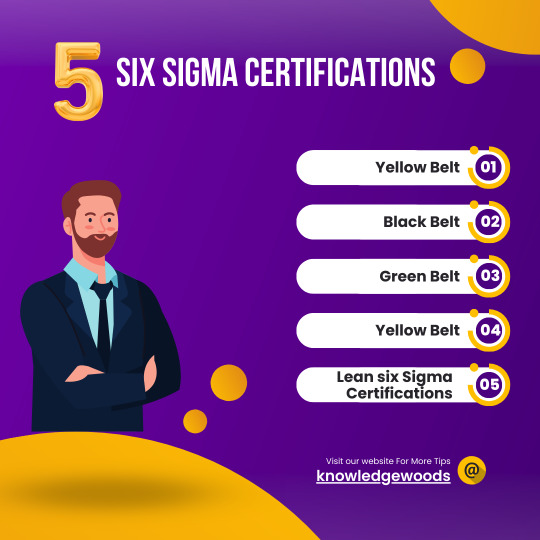#CertificationGuide
Text
Cardiac Care Technician Certification Guide
Struggling to advance your career in healthcare? We've got the solution!
Discover how to become a Certified Cardiac Care Technician and take control of your future.
Are you passionate about making a difference in people's lives but lack the right credentials? Don't let this hold you back any longer! Our comprehensive blog provides everything you need to know about obtaining your certification.
Say goodbye to limited job opportunities and hello to a rewarding career in cardiac care. With our blog information , you'll be on your way to success in no time!
Join hundreds of satisfied individuals who have already transformed their lives with our help. Embrace the chance to excel in both your professional and personal growth.
Ready to embark on this life-changing journey? Take the first step now by clicking on this : Cardiac Care Technician . Don't miss out on this incredible opportunity!

#cardiaccare#healthcarecareer#certificationguide#medicaltraining#careerdevelopment#healthprosperity#successpath#medicalprofessionals#medicalcareers#careeradvancement#healthcareopportunities#dreamjob#reachyourpotential#healthysociety#futuregoals#nurtureyourcareer#medicalaspirations#healthylifestyle#followyourpassion#healthandwellness#hrishiblogbuddhi#blog
1 note
·
View note
Text
Fitness Certifications: How I became ACSM Certified
Fitness Certifications: How I became ACSM Certified
So if your interested in working in the fitness industry, getting a professional certification is a must-do. Whether you want to be a personal trainer, health coach, group exercise instructor or work in a clinical setting, there is a certification that fits all of these positions. Professional certifications will help you secure a job in the field and give you credentials to prescribe exercise.…
View On WordPress
#ACSM#ACSMCEP#ACSMcertified#ACSMCPT#certificationguide#Certifiedpersonaltrainer#Exercise#exercisephysiology#exercisescience#Exercisespecialist#fitnesscertifications#Fitnessindustry#Motivation#professional
0 notes
Text

"The AZ-204 Certification unlocks the power of cloud development! Learn why the Microsoft Azure Developer Associate Certification (AZ-204) is a game changer in cloud computing. From developing scalable applications to mastering Azure services, AZ-204 opens up a world of possibilities. With AZ-204, you can advance your skills and explore the future of cloud development!
#AzureDeveloper#CloudCertification#AZ204Exam#MicrosoftAzure#CloudMastery#DeveloperSkills#CloudComputing#CertificationGuide#AzureMastery#TechSkills
0 notes
Text

Microsoft Certification can propel your career to new heights! Discover the benefits of becoming Microsoft Certified, ranging from improved skills and industry recognition to increased employability. Enhance your professional development with Microsoft Certification and embrace a future of limitless possibilities!
#MicrosoftCertification#ITTraining#TechSkills#CareerDevelopment#OnlineLearning#CertificationGuide#MicrosoftTrainingCourses#ProfessionalGrowth#TechCareer#SkillBuilding
0 notes
Text

Six Sigma Black Belt Certification will help you reach your full potential and advance your career! Dive into our guide for a step-by-step journey that includes insights from 'The Certified Six Sigma Black Belt Handbook.' Improve your skills, lead impactful improvement projects, and gain access to new opportunities. Begin your path to excellence today!
#SixSigma#BlackBeltCertification#ProcessImprovement#DMAIC#SixSigmaMethodology#CareerDevelopment#ContinuousImprovement#CertificationGuide#ProfessionalExcellence#LeanSixSigma#QualityManagement
0 notes
Text
Achieving Excellence: A Comprehensive Guide on How to Get Six Sigma Black Belt Certified
Introduction:
In today's competitive business environment, organizations are constantly looking for ways to improve their processes, reduce defects, and increase overall efficiency. Six Sigma methodologies have emerged as a powerful tool for achieving these goals, with the Six Sigma Black Belt certification representing the pinnacle. In this blog post, we will look at the process of how to get Six Sigma Black Belt certified, focusing on key steps and resources, including insights from "The Certified Six Sigma Black Belt Handbook" third and fourth editions.
I. Understanding the Six Sigma Black Belt Certification:
A. What is Six Sigma?
Six Sigma is a data-driven approach to reducing defects, improving processes, and optimizing overall business performance. It uses a structured methodology called DMAIC (Define, Measure, Analyze, Improve, Control) to drive continuous improvement.
B. Importance of Six Sigma Black Belt Certification:
Six Sigma Black Belt certification indicates a high level of proficiency in implementing Six Sigma methodologies. Holders of this certification play a critical role in leading and managing improvement projects within an organization, greatly contributing to its success.
II. Key Steps to Become Six Sigma Black Belt Certified:

A. Educational Background and Prerequisites:
1.Have a relevant degree or work experience in a related field.
2. Learn Six Sigma concepts through introductory courses.
B. Gain Work Experience:
1.Gain hands-on experience with process improvement projects.
2. Work on Green Belt projects to gain a practical understanding of Six Sigma.
C. Formal Six Sigma Training:
1. Enroll in a certified Six Sigma Black Belt training program.
2. Select a reputable training provider with experienced instructors.
D. Preparation for the Certification Exam:
1.Use the third edition of "The Certified Six Sigma Black Belt Handbook" for in-depth study.
2. Supplement your studies with additional resources and practice tests.
III. The Certified Six Sigma Black Belt Handbook: Third Edition:
A. Overview of the Handbook:
1.T.M. Kubiak and Donald W. Benbow wrote the third edition, which is a comprehensive guide to Black Belt certification.
2. Concentrates on core Six Sigma concepts, tools, and methodologies.
B. Utilizing the Handbook for Exam Preparation:
1. Understand the DMAIC process in detail.
2. Discover statistical tools and techniques for data analysis.
3. Investigate real-world case studies and examples to gain practical insights.
IV. The Certified Six Sigma Black Belt Handbook: Fourth Edition:
A. Introduction to the Fourth Edition:
1. The fourth edition, authored by T.M. Kubiak, Donald W. Benbow, and H. Fred Walker, builds on the success of its predecessor.
2. Reflects current industry trends and best practices.
B. Examining Updated Content:
1. Investigate new case studies and examples that reflect contemporary challenges.
2. Use the handbook to gain a deeper understanding of advanced Six Sigma concepts.
V. Exam Day Strategies:
A. Time Management:
1. Familiarize yourself with the exam structure and time constraints.
2. Prioritize questions and use time wisely.
B. Reference Materials:
1.Bring essential reference materials, such as "The Certified Six Sigma Black Belt Handbook."
2. Use the handbook for quick reference during the exam.
Conclusion
How to be Six Sigma Black Belt certified is a significant accomplishment that necessitates dedication, practical experience, and extensive preparation. "The certified six sigma black belt handbook fourth edition" and “The certified six sigma black belt handbook third edition” is an invaluable resource for aspiring candidates, offering comprehensive insights and practical knowledge. Individuals can successfully pursue Six Sigma Black Belt certification and contribute significantly to organizational excellence by following the steps outlined and utilizing these authoritative resources.
#SixSigma#BlackBeltCertification#ProcessImprovement#DMAIC#SixSigmaMethodology#CareerDevelopment#ContinuousImprovement#CertificationGuide#ProfessionalExcellence#LeanSixSigma#QualityManagement
0 notes
Text

Embark on the journey to become a Six Sigma Green Belt certified professional and advance your career! Our guide includes step-by-step instructions, accredited training programs, and resources such as the Certified Six Sigma Green Belt Handbook. Improve your skills, lead successful projects, and stand out in quality management. Begin your path to success now.
#SixSigma#GreenBeltCertification#ProcessImprovement#QualityManagement#DMAIC#SixSigmaMethodology#CareerDevelopment#ContinuousImprovement#CertificationGuide#ProfessionalGrowth#ProjectManagement
0 notes
Text
Mastering Excellence: A Comprehensive Guide on How to Become Six Sigma Green Belt Certified
Introduction:

In the world of quality management and process improvement, obtaining Six Sigma Green Belt certification is a significant achievement. This certification not only boosts your professional credibility, but it also provides you with the tools and methodologies needed to make a significant impact on organizational efficiency. In this blog post, we will look at the steps of how to get Six Sigma Green Belt certified professional, highlighting key points and referring to the Certified Six Sigma Green Belt Handbook Second Edition.
Understanding Six Sigma Green Belt Certification:
Before we get into the certification process, let's define Six Sigma and Green Belt certification. Six Sigma is a set of techniques and tools for process improvement that seek to reduce defects and variations in manufacturing and business processes. The Green Belt certification denotes a medium level of expertise, indicating an individual's ability to lead and implement process improvement initiatives.
How to Get Six Sigma Green Belt Certified:
1. Understand the Basics of Six Sigma: To begin the journey toward Six Sigma Green Belt certification, it is critical to have a thorough understanding of the Six Sigma methodology. Learn about key concepts such as DMAIC (Define, Measure, Analyze, Improve, Control), statistical analysis, and process improvement techniques.
2. Choose an Accredited Training Program: Enroll in a reputable Six Sigma Green Belt training course. Look for courses approved by reputable organizations such as the International Association for Six Sigma Certification (IASSC) or the American Society for Quality (ASQ). These programs usually cover the core tools, techniques, and methodologies outlined in the Certified Six Sigma Green Belt Handbook.
3. Attend Training and Complete the Coursework: Actively participate in training sessions and complete all assigned coursework. This will cover both theoretical and practical aspects of Six Sigma, allowing you to apply your knowledge in real-world scenarios.
4. Hands-On Project Work: Hands-on project experience is an important part of the Six Sigma Green Belt certification process. You will be responsible for leading a process improvement project using the DMAIC methodology, guided by a certified Six Sigma Black Belt or Master Black Belt. This hands-on experience is invaluable and ensures that you can apply Six Sigma principles in a real-world organizational setting.
5. Study the Certified Six Sigma Green Belt Handbook: The Certified Six Sigma Green Belt Handbook, Second Edition is a comprehensive resource that covers all Six Sigma concepts in depth. Use this handbook as a resource for your training and project work. It provides valuable insights, case studies, and practical tips to help you better understand and apply Six Sigma principles.
6. Prepare for the Certification Exam: Most certification programs end with a formal exam. Prepare thoroughly by using study materials, practice exams, and knowledge from the handbook. The exam will assess your understanding of Six Sigma concepts as well as your ability to apply them in a variety of scenarios.
7. Pass the Certification Exam: Passing the certification exam is the final step toward becoming a Six Sigma Green Belt certified professional. Achieving this milestone validates your ability and willingness to contribute to process improvement initiatives within your organization.
Conclusion:
How to become Six Sigma Green Belt certified, you must be committed to continuous improvement and master the Six Sigma principles. By following the steps outlined, utilizing accredited training programs, and consulting the Certified Six Sigma Green Belt Handbook, you can confidently navigate the certification process and significantly contribute to the success of your organization's process improvement initiatives. With Six Sigma Green Belt certified professional, you can embrace the journey, apply what you've learned, and take your career to the next level.
#projectmanagement#SixSigma#GreenBeltCertification#ProcessImprovement#QualityManagement#DMAIC#SixSigmaMethodology#CareerDevelopment#ContinuousImprovement#CertificationGuide#ProfessionalGrowth#ProjectManagement#ASQ#IASSC
0 notes
Text

Obtain Six Sigma Black Belt certification to advance your career! Dive into process improvement and quality management knowledge. Increase your skills and leadership abilities. Begin your journey to business excellence!
#SixSigma#BlackBeltCertification#ProcessImprovement#QualityManagement#CareerDevelopment#ProfessionalCertification#ProjectManagement#ContinuousImprovement#DMAIC#CertificationGuide#SkillsDevelopment
0 notes
Text
Mastering Excellence: A Comprehensive Guide on How to Get Six Sigma Black Belt Certified and Crafting a Winning Resume
Introduction:

In the ever-changing landscape of professional development, obtaining certifications has become an essential step toward career advancement. One such coveted certification is the Six Sigma Black Belt, which indicates proficiency in process improvement and quality management. This comprehensive guide will walk you through the process of how to become Six Sigma Black Belt certified, as well as provide advice on how to write an impressive certified Six Sigma Black Belt resume.
Understanding Six Sigma:
Before diving into the certification process, it's critical to understand the fundamentals of Six Sigma. Six Sigma is a set of techniques and tools used to improve business processes by reducing defects and variations. It was first developed by Motorola in the 1980s. The certification process is divided into levels, with Six Sigma Black Belt being one of the most attainable designations.
Step 1: Prerequisites and Eligibility:
To begin the journey of how to become Six Sigma Black Belt certified, candidates must first meet the prerequisites. Typically, this requires prior experience and certification at the Green Belt level, though exceptions may exist depending on the certification body. Professional experience with process improvement and project management is frequently highly valued.
Step 2: Choose a Certification Body:
Several organizations, including the American Society for Quality (ASQ) and the International Association for Six Sigma Certification (IASSC), provide Six Sigma Black Belt certifications. Each body may have slightly different requirements and examination processes, so it's critical to research and select the one that best suits your goals and preferences.
Step 3: Enroll in a Six Sigma Black Belt Certification Program:
To gain the necessary knowledge and skills, enroll in a reputable Six Sigma Black Belt certification program. These programs typically include advanced statistical methods, project management, leadership skills, and detailed case studies. There are both online and in-person options available, allowing for a wide range of learning preferences.
Step 4: Exam Preparation:
The Six Sigma Black Belt certification exam is both rigorous and comprehensive. Successful candidates have a thorough understanding of statistical tools, the DMAIC methodology (Define, Measure, Analyze, Improve, Control), and project management principles. Allow plenty of time for exam preparation, using study materials, practice exams, and real-world case studies to solidify your knowledge.
Step 5: Pass the Certification Exam:
The certification exam represents the culmination of your efforts. Be prepared, focused, and confident on exam day. Passing the exam demonstrates your ability to apply Six Sigma methodologies to achieve organizational excellence.
Step 6: Gain Practical Experience:
While a Six Sigma Black Belt certification validates your theoretical knowledge, practical experience is equally important. Participate in real-world projects, lead improvement initiatives within your organization, and use Six Sigma principles to achieve tangible outcomes. Practical experience builds your credibility and refines your skills.
Crafting a Certified Six Sigma Black Belt Resume:
Now that you've earned your Six Sigma Black Belt certification, it's time to highlight your achievements with an impressive resume. Here are the key elements to include:
1. Professional Summary: Begin your resume with a brief professional summary emphasizing your knowledge of Six Sigma methodologies, project management, and process improvement.
2. Certifications Section: Clearly indicate your Six Sigma Black Belt certification, including the certifying body and the date of certification.
3. Education: Include any relevant educational qualifications, with a focus on Six Sigma, business process management, or quality management.
4. Work Experience: Detail your professional experience, focusing on roles in which you used Six Sigma principles. Highlight specific projects, outcomes, and how your contributions have improved process efficiency and quality.
5. Skills: Demonstrate your ability to conduct statistical analyses, make data-driven decisions, manage projects, and lead. Include any software experience with tools commonly used in Six Sigma projects.
6. Achievements: Dedicate a section to your accomplishments, quantifying results whenever possible. Demonstrate how your contributions improved organizational performance.
7. Professional Memberships: If applicable, include any memberships in Six Sigma or quality management organizations that demonstrate your commitment to ongoing professional development.
8. References: Include references from colleagues, supervisors, or project stakeholders who can attest to your Six Sigma expertise and the success of your projects.
Conclusion:
How to get Six Sigma Black Belt certified is a significant achievement that can open doors to exciting career opportunities. By following the steps outlined in this guide and creating a well-crafted resume, you can position yourself as a sought-after professional with the skills and knowledge to drive continuous improvement and excellence in any organization.
#SixSigma#BlackBeltCertification#ProcessImprovement#QualityManagement#CareerDevelopment#ProfessionalCertification#ProjectManagement#ContinuousImprovement#DMAIC#CertificationGuide#SkillsDevelopment
0 notes
Text

Discover the transformative power of Six Sigma! Learn why Six Sigma is critical to business success and process improvement. Learn how this methodology improves efficiency, reduces defects, and increases overall quality. Discover the value of data-driven decision-making and how Six Sigma can help your organization. Improve your skills and knowledge with insights into why Six Sigma is important.
#SixSigma#GreenBeltCertification#ProcessImprovement#DMAICMethodology#CertificationGuide#ProfessionalDevelopment#QualityManagement#SixSigmaTraining#CareerAdvancement#CertifiedSixSigmaGreenBelt
0 notes
Text
A Comprehensive Guide of How to Become Six Sigma Green Belt Certified
Introduction:
In today's dynamic and competitive business landscape, organizations are constantly looking for ways to improve their processes, reduce inefficiencies, and boost overall performance. Six Sigma methodology has emerged as an effective tool for achieving these goals, with certified professionals playing a critical role in promoting process excellence. This blog will walk you through the process of how to become six sigma green belt certified, covering the certification process, resources, and the highly regarded "Certified Six Sigma Green Belt Handbook Second Edition."
I. Understanding Six Sigma and the Green Belt Certification:
A. What is Six Sigma?

Six Sigma is a data-driven approach to process improvement that identifies and eliminates defects or variations. It uses a structured problem-solving methodology known as DMAIC (Define, Measure, Analyze, Improve, and Control).
B. Why Green Belt Certification?
A Six Sigma Green Belt is someone who understands the Six Sigma methodology and tools and can lead process improvement projects within an organization. This certification demonstrates your ability to apply Six Sigma principles to achieve tangible results.
II. Eligibility and Prerequisites:
To pursue Six Sigma Green Belt certification, certain prerequisites and eligibility criteria must be met. Typically, candidates must have:
A. Educational Qualifications: A high school diploma or equivalent is frequently required, though some employers may prefer candidates with more education.
B. Work Experience: While not required, having some professional experience, particularly in a process-oriented setting, can be advantageous.
C. Training: A formal Six Sigma Green Belt training program is a common requirement. These programs, offered by accredited institutions, cover the fundamental concepts and tools of Six Sigma.
III. Selecting the Right Training Program:
Choosing the right training program is critical for achieving Six Sigma Green Belt certification. Look for programs that are accredited by recognized organizations and cover the following areas:
A. Comprehensive Curriculum: Ensure that the program includes the DMAIC methodology, statistical tools, and practical Six Sigma principles.
B. Experienced Instructors: Qualified and experienced instructors significantly improve the training quality. Look for programs taught by instructors with real-world industry experience.
C. Interactive Learning: Programs that include hands-on exercises, case studies, and real-world examples provide a more effective learning environment.
IV. The Certification Exam:
After completing the training program, candidates must pass a certification exam of how to get six sigma green belt certified. The exam typically assesses your understanding of Six Sigma concepts, problem-solving abilities, and tool use. To prepare for the exam, it is recommended that you review the training materials thoroughly and practice with sample questions.
V. The Certified Six Sigma Green Belt Handbook Second Edition:
The "Certified Six Sigma Green Belt Handbook Second Edition" is an excellent resource for Six Sigma Green Belt aspirants. This handbook, written by Roderick A. Munro, Govindarajan Ramu, and Daniel J. Zrymiak, is a comprehensive guide to key Six Sigma concepts, tools, and techniques. Topics include:
A. DMAIC Methodology: Detailed discussions of each phase of the DMAIC cycle, including insights into the application of Six Sigma principles.
B. Statistical Tools: In-depth coverage of statistical tools used in Six Sigma projects, including practical examples to help you understand.
C. Case Studies: Real-world case studies show how Six Sigma principles have been successfully applied in a variety of industries.
D. Exam Preparation: The handbook is also a useful resource for exam preparation, as it includes sample questions and answers to test your knowledge.
VI. Maintaining Certification and Continuous Improvement:
Once certified, it is critical to engage in ongoing learning and improvement. Six Sigma consultants are encouraged to:
A. Stay Informed: Keep up with the latest Six Sigma developments and trends by reading industry publications, participating in forums, and attending networking events.
B. Participate in Projects: Actively participate in Six Sigma projects within your organization to practice and strengthen your skills.
C. Pursue Advanced Certifications: Consider pursuing higher-level certifications, such as Six Sigma Black Belt, to expand your knowledge.
Conclusion:
Becoming a Six Sigma Green Belt certified professional is a rewarding journey that includes education, training, and hands-on application. “The Certified Six Sigma Green Belt Handbook Second Edition” is an invaluable resource during this process, providing insights and guidance. By following the steps outlined and committing to continuous improvement, you can become a skilled Six Sigma Green Belt professional who will contribute to your organization's success and efficiency.
#SixSigma#GreenBeltCertification#ProcessImprovement#DMAICMethodology#CertificationGuide#ProfessionalDevelopment#QualityManagement#SixSigmaTraining#CareerAdvancement#CertifiedSixSigmaGreenBelt
0 notes
Text
Navigating the realm of Python certifications? Uncover the answer to the pivotal question, Which certification is best for Python? Dive into our comprehensive guide to discover the certifications that stand out in the Python ecosystem. Elevate your skills, boost your career, and make informed decisions on the best certification for your Python journey.
1 note
·
View note
Text

Become a certified Six Sigma Black Belt by mastering the DMAIC methodology, statistical tools, and leadership skills. Follow our guide for a successful journey.
#SixSigma#BlackBeltCertification#ProcessExcellence#DMAIC#LeanSixSigma#QualityManagement#LeadershipSkills#CareerAdvancement#StatisticalTools#ProfessionalDevelopment#CertificationGuide#BusinessImprovement
0 notes
Text
Achieving Excellence: A Comprehensive Guide on How to be Six Sigma Black Belt Certified
Introduction:
Obtaining Six Sigma Black Belt certification is an important milestone in quality management and process improvement. This globally recognized certification demonstrates an individual's expertise in using the Six Sigma methodology to improve organizational efficiency and effectiveness. In this blog, we will look at the essential steps to becoming a Six Sigma Black Belt, using valuable resources like "The Certified Six Sigma Black Belt Handbook Third Edition”and “The Certified Six Sigma Black Belt Handbook Fourth Edition”.
I. Understanding Six Sigma:
Before beginning the certification process, it's critical to understand the fundamental concepts of Six Sigma. Six Sigma is a disciplined approach to improving process performance by identifying and eliminating the root causes of defects and variability. The methodology is divided into five distinct phases known as DMAIC: define, measure, analyze, improve, and control.

II. Prerequisites and Eligibility:
Individuals must generally meet specific prerequisites before pursuing Six Sigma Black Belt certification. While requirements vary by certifying body, common prerequisites include a certain level of experience in process improvement projects and a Green Belt certification. It is recommended that you check the certifying body's specific eligibility criteria.
III. Selecting a Certifying Body:
Several organizations provide Six Sigma certifications, including the American Society for Quality (ASQ) and the International Association for Six Sigma Certification (IASSC). Research and select a certifying body that is compatible with your career objectives and preferences. Each organization may have its own certification process and requirements.
IV. Preparation for the Certification Exam:
Aspiring candidates for the Six Sigma Black Belt certification exam frequently use comprehensive study materials. "The Certified Six Sigma Black Belt Handbook," particularly the third edition, is an excellent resource for essential topics, tools, and techniques. Consider exploring the fourth edition for the most recent insights into Six Sigma practices.
V. Studying "The Certified Six Sigma Black Belt Handbook":
"The Certified Six Sigma Black Belt Handbook" is a comprehensive guide for individuals looking to succeed in their Black Belt certification journey. This resource discusses a variety of topics, such as statistical tools, project management, and the DMAIC methodology. To strengthen your knowledge base, make sure you thoroughly review and understand the content.
VI. Crafting a Certified Six Sigma Black Belt Resume:
As you progress through your certification process, it is critical to highlight your expertise on your resume. Highlight your experience with process improvement projects, mention your Green Belt certification, and emphasize any specialized skills you learned during your Six Sigma training. Make sure your resume reflects your dedication to quality management excellence.
VII. Enrolling in Certification Training:
Many certifying bodies provide structured training programs to help candidates prepare for the Black Belt certification exam. These programs frequently include classroom instruction, online courses, and workshops. Participating in such training not only increases your understanding, but also allows you to interact with experienced Six Sigma practitioners.
VIII. Taking the Certification Exam:
Register for the Six Sigma Black Belt certification exam after you've completed your preparation. The exam typically evaluates your understanding of Six Sigma principles, tools, and applications. Time management is critical during the exam, so practice answering sample questions to simulate the test environment.
IX. Continuous Improvement and Professional Development:
Achieving Six Sigma Black Belt certification is an admirable accomplishment, but the journey does not stop there. Engage in continuous learning, stay current on industry trends, and look for opportunities to apply your skills in real-world projects. Consider connecting with professional networks and attending conferences to expand your knowledge.
Conclusion:
How to get Six Sigma Black Belt certified demonstrates your commitment to quality and process improvement. By following the steps outlined in this guide, including using resources such as "The Certified Six Sigma Black Belt Handbook," you can embark on a rewarding journey of how to be Six Sigma Black Belt certified. Remember that excellence is an ongoing pursuit, and your certification is a step toward making a long-term impact on organizational efficiency and effectiveness.
#SixSigma#BlackBeltCertification#ProcessExcellence#DMAIC#LeanSixSigma#QualityManagement#LeadershipSkills#CareerAdvancement#StatisticalTools#ProfessionalDevelopment#CertificationGuide#BusinessImprovement
0 notes
Text

With our comprehensive guide, you can discover the streamlined path to Six Sigma Green Belt certification. Navigate eligibility criteria, select reputable certification bodies, and gain useful exam preparation tips. Step-by-step instructions for becoming a certified Six Sigma Green Belt professional will help you advance your career.
#SixSigma#GreenBeltCertification#CareerDevelopment#ProcessImprovement#ProfessionalGrowth#CertificationGuide#DMAICMethodology#SixSigmaTraining#ExamPreparation#CareerAdvancement
0 notes